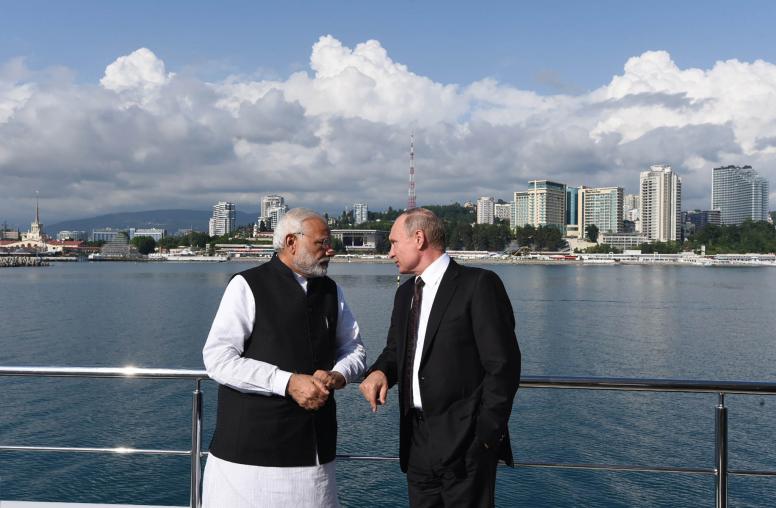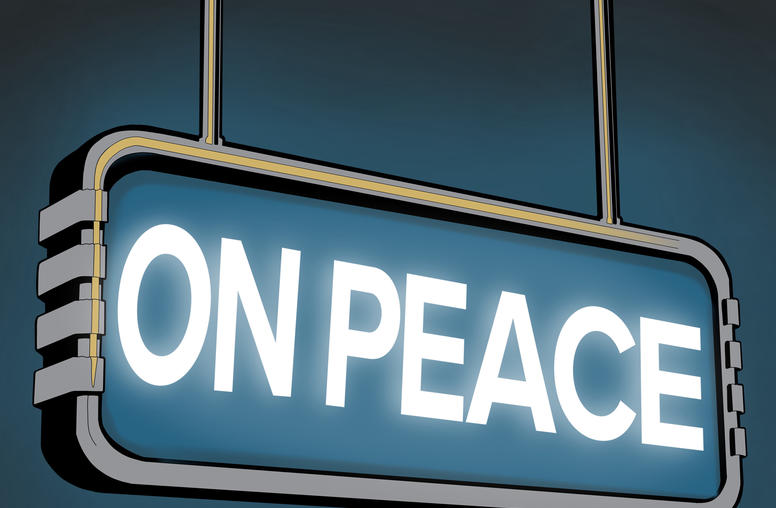Russia’s New Nuclear Threat: Power Plants as Weapons
Armed seizure of Ukraine’s plants is a historic, global risk. Nuclear power must be demilitarized in war.
Russia’s invasion of Ukraine and occupation of Europe’s largest nuclear power station have triggered the first real-world case of a crisis that security scholars have feared for decades: a threat of radiological disaster from a wartime incursion on an operating nuclear power plant. Russia effectively is using the plant at Zaporizhzhia as a pre-positioned nuclear weapon to threaten and intimidate not only Ukrainians but millions of Europeans across a dozen countries. This is undermining global security institutions in which all countries have a stake, and Russia must join the international community in treating nuclear power plants as demilitarized zones.

In particular, Russia must cease all military operations at or near Ukraine’s nuclear facilities and return full control of the Zaporizhzhia plant to Ukraine. The requirement that it do so is rooted in international humanitarian law, which prohibits attacks against civilian targets and demands “particular care” around nuclear power stations. Indeed, Russia’s actions around the Zaporizhzhia plant, and earlier at the Chernobyl nuclear complex, violate Russia’s own formally professed standards, which bar military actions that “may result” in any release of “destructive factors and consequent severe losses among the civilian population.”
What Russia is Doing and Why
Russia launched its latest invasion of Ukraine on February 24, and on March 4 Russian forces captured the nuclear power plant near Zaporizhzhia. After shelling the facility and causing a fire, Russian troops occupied it and stationed personnel and munitions there, in effect using the nuclear reactors as a shield for their offensive operations. Despite the initial fire, no essential equipment was damaged and Ukrainian technicians have continued to operate the complex. As the war drags on past its sixth month, however, concern for the safety of the facility has grown. The Ukrainian staff reports harassment and abuse by Russian forces, and the facility has been shelled, damaging electrical lines vital to the reactors’ cooling systems.
Ukrainians’ fierce resistance, bolstered by a stream of modern, western weaponry, has turned Russia’s war effort into a slow, bloody slog. Russia’s recent advances in the Donbas region are measured in meters. At the same time, Russia has had to divert forces to the south—including the Zaporizhzhia region—where Ukraine reportedly is preparing a counteroffensive. Events on the battlefield have cast doubt on the Kremlin’s ability to hold planned “referendums” to justify its annexation of occupied territory in Ukraine. This has made undermining western support for Ukraine even more important to the Kremlin.
Risks and International Response
To that end, the government of Russian President Vladimir Putin has underscored the risks of an accident at Zaporizhzhia to European countries helping to ship NATO weapons to Ukraine. The Russian defense ministry last week produced a map predicting how radioactive fallout could spread to those countries.
The risk is real. Zaporizhzhia, with six separate reactors, is the largest nuclear power plant in Europe and the 10th largest in the world. While its containment structures are stronger than those at Chernobyl and built to withstand an airplane crashing into them, the power plant needs electricity to cool the reactors and prevent a meltdown (as at Japan’s Fukushima plant in 2011). Ongoing shelling has cut some of the power lines into the reactor. In addition, nuclear fuel and waste containers stored at the site could be damaged, releasing radiation. Finally, the plant’s location on the Dnipro River means that any release of radiation could also spread to the Black Sea.
For these reasons, the international community has called for Russia to allow access to International Atomic Energy Agency (IAEA) inspectors and to create a demilitarized zone around the facility. U.N. Secretary General Antonio Guterres called for all military forces to be withdrawn from the plant, a call that the United States, Ukraine and at least 40 other countries have echoed.
Russia has repeatedly rejected calls for its withdrawal. Foreign ministry spokesman Ivan Nechayev said last week, “proposals for a demilitarized zone around the Zaporizhzhia nuclear power plant are unacceptable” because “their implementation will make the plant more vulnerable.” Russia accuses Ukraine of shelling the facility and demands that it stop.
IAEA Director General Rafael Mariano Grossi has also stressed the importance of his agency inspecting the facilities. Russia has seemed to be more open to this, but it scuttled an earlier visit by insisting that it was too dangerous for the mission to go to Zaporizhzhia via Kyiv. After an August 19 phone call with French President Emmanuel Macron, Putin has said he would help the IAEA access the plant. Whether this means he will allow them to respect Ukrainian sovereignty and travel through Kyiv remains to be seen. Conducting this inspection (and demilitarization) in a way that ensures continued support for Ukrainian sovereignty is essential. Allowing Putin’s Kremlin to use nuclear blackmail to accomplish its political goals will only encourage it and other bad actors to do the same in future.
Russia’s Dangerous Precedent
Russia’s actions in Ukraine risk undermining global nuclear security arrangements. Russia has consistently been a roadblock to international institutions like the IAEA. In contrast, Ukraine has welcomed its participation. Early in the war, Russia moved armored forces through the Chernobyl exclusion zone, stirring up radioactive soil and spiking radiation levels. Russian forces seized control of the plant, which is being decommissioned, and endangered safety by holding a single team of exhausted employees within the plant for more than three weeks with no relief. Ukraine welcomed the IAEA in to inspect the facility as soon as the Russians withdrew.
A vital concern in Russia’s upholding of international law and security around nuclear hazards is its demonstrably poor control over significant numbers of its forces on the ground, who have committed repeated atrocities and attacks on civilian targets protected by humanitarian laws. Amid the unpredictability of war, that concern can only rise as Russia recruits and deploys ill-trained and irregular units that include clan-based militias, mercenaries and criminal convicts from Russian prisons.
While Russia’s actions most directly threaten Ukraine and central Europe from the Baltic to the Black Sea, its military use of a nuclear power plant for battlefield advantage is a first in warfare, and a precedent that weakens principles undermining the security of all 430-plus nuclear power reactors operating in more than 30 countries worldwide. Before Russia’s assault, of all nations that operate nuclear power plants, four had at the same time fought wars that included ground combat: Armenia, India, Pakistan and Slovenia. Only in Slovenia in 1991 did combat approach an operating power plant, at Krško. Fortunately, in that conflict forces did not target the plant, though sorties by the Yugoslav air force led its operators to shut it down for safety.
To Respect Law and Security, Demilitarize
Russia’s behavior in Ukraine is a violation of the normal functions of the United Nations and its global agency for the protection of nations and peoples from civilian nuclear disasters that will respect no borders. The Kremlin’s actions around the Zaporizhzhia nuclear power plant represent a new dimension in warfare and a clear violation of international humanitarian law, using a peaceful nuclear facility as a potential dirty bomb with which to terrorize the world and extort military and political concessions.
In what is history’s first direct collision of armed conflict and civilian nuclear power, the world should demand of the Kremlin that it respect these laws and institutions that protect us all, worldwide. Russia must allow unimpeded IAEA access to this endangered nuclear facility and withdraw its forces to permit an internationally monitored demilitarized zone around the plant. Whatever we collectively demand of Russia now, and whatever response Russia provides, will inevitably establish a precedent for military action anywhere in the world in years to come.
The views expressed in this article are those of the author and not necessarily those of the U.S. government.



